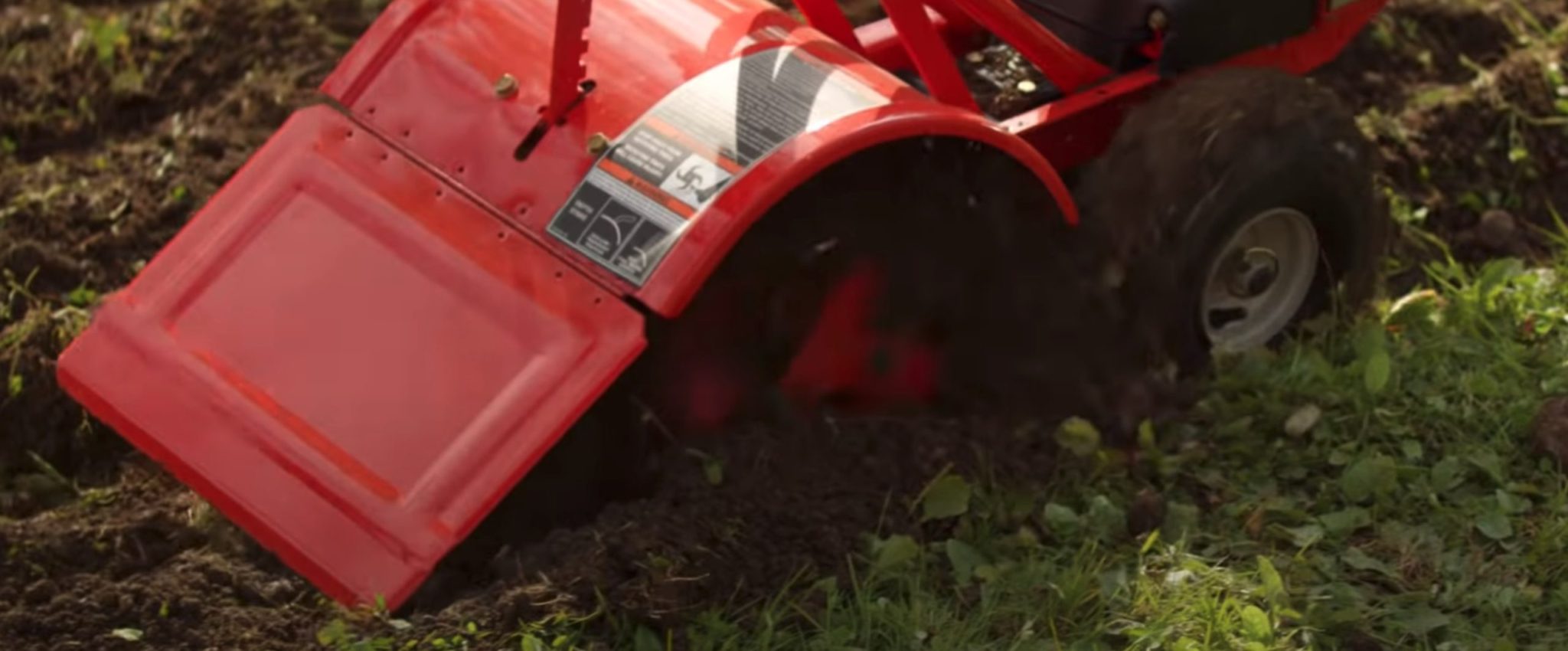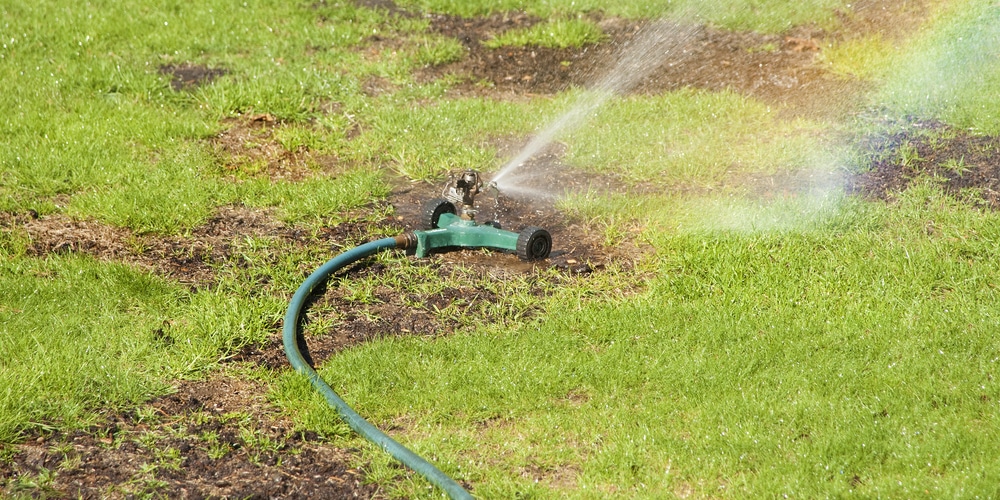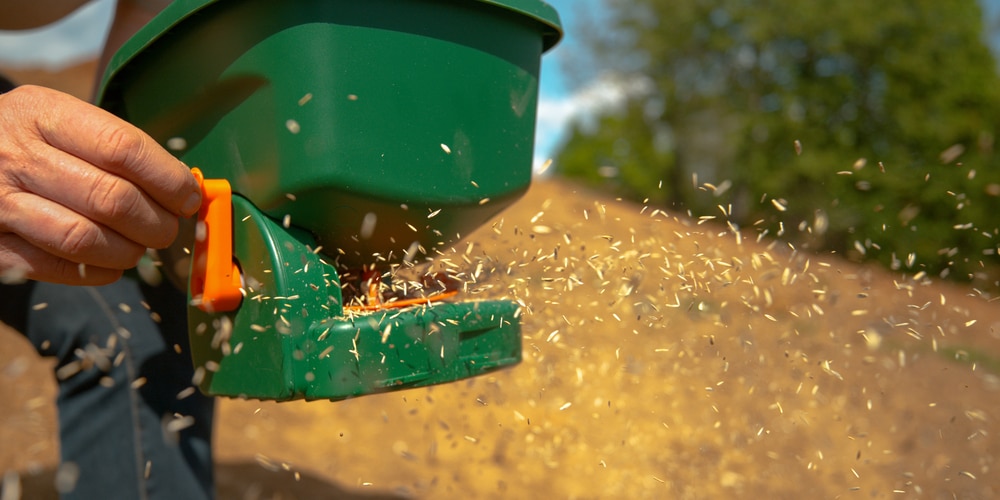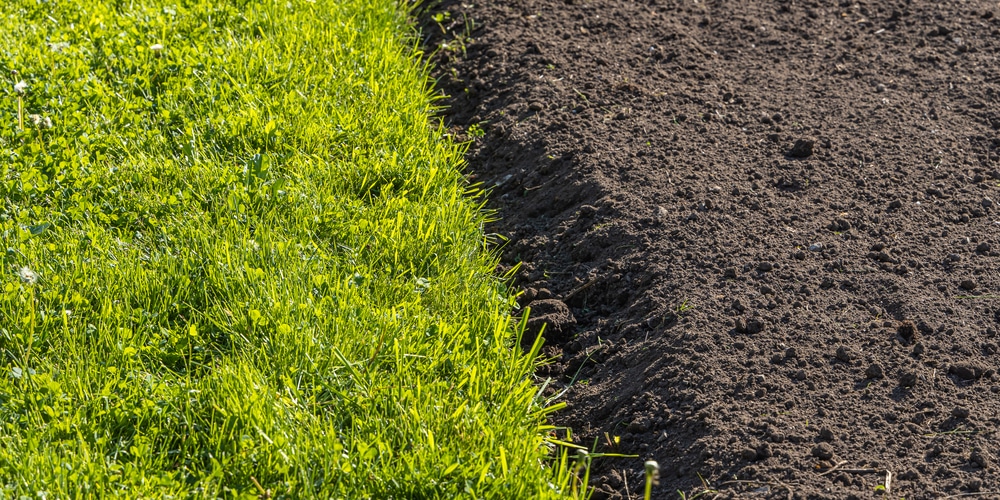Use the Right Seed for Your Yard (Climate/Shade/Traffic)
When you embark on a lawn establishment or renovation project, the selection of grass seed is pivotal to your success.
Grass types vary considerably in their tolerance to different climates as well as in maintenance needs. Here’s a quick guide to help you differentiate among the common grass seed varieties:
- Cool-Season Grasses: Thrive in northern regions with cold winters and moderate summers.
- Kentucky Bluegrass: Known for its fine texture and rich color.
- Fescues: With types like tall fescue and fine fescue, they are adaptable to shade and low maintenance.
- Perennial Ryegrass: Fast germinating and used for overseeding.
- Warm-Season Grasses: Best for southern areas with hot summers and mild winters.
- Bermuda Grass: Highly drought-resistant and thrives in full sun.
- Zoysia Grass: Offers a thick carpet-like lawn with high wear tolerance.
- St. Augustine Grass: Prefers shade and has a high tolerance to humidity.
Selecting the Right Seed:
- Consider Your Climate: Choose cool or warm-season seeds that match your region’s weather.
- Assess Your Soil: Soil tests provide critical information for selecting the right grass.
- Plan for Maintenance: Evaluate how much time you can dedicate to lawn care.
Preparing the Soil for Planting

Before you dive into planting grass seed, it’s crucial to prepare the soil properly. Ensuring it has the right nutrient balance and structure will set the foundation for a lush, green lawn.
Soil Testing and Nutrient Management
- Test the Soil: Before anything else, get a soil test to check for nutrient deficiencies and pH levels.
- Adjust as Needed:
- If the pH is off, apply lime for acidic soil or sulfur for alkaline soil to bring it into the optimal range (6.0 to 7.0 for most grass types).
- Address nutrient deficiencies with the appropriate fertilizers, focusing on nitrogen, phosphorus, and potassium levels as indicated by your soil test results.
Cultivating and Conditioning the Soil
- Remove Debris: Begin by raking the area to remove sticks, rocks, and old grass. This will also help to loosen the top layer of soil.
- Cultivate for Compaction: For areas with compacted soil, core aeration is advised to improve air, water, and nutrient movement.
- Add Organic Matter:
- Work in compost or peat moss to increase soil fertility and improve structure.
- Integrate a starter fertilizer rich in phosphorus to support strong root growth.
How to Sow Grass Seed
Achieving a lush, green lawn starts with the proper sowing of grass seed. Explore these professional techniques to ensure an even, healthy growth: Broadcast Seeding, Hydroseeding, and Overseeding.
Broadcast Seeding
- Manual Distribution: To cover small to medium areas, use a hand-held or chest-mounted broadcaster to disperse seed. Ensure you walk at a steady pace to spread the seed uniformly.
- Mechanical Spreaders: For larger lawns, a mechanical spreader attached to a tractor allows you to distribute grass seed over a wide area evenly and efficiently.Tips:
- Prepare the Soil: Before broadcasting, rake the area to remove clumps and debris.
- Consistent Application: Overlap your walking paths slightly to avoid missed spots.
Hydroseeding
- Spray Mixture: Hydroseeding involves spraying a slurry containing grass seed, fertilizer, and mulch over the prepared soil.
- Quick Establishment: This method promotes rapid germination and is cost-effective over large areas.Steps:
- Hire a Professional: Due to the specialized equipment required, consider hiring a professional service.
- Water Adequately: After hydroseeding, water the area regularly to maintain a moist seedbed until germination.
Overseeding
- Reviving Lawns: Overseeding is used to improve the density of thin lawns or to introduce new grass varieties.
- Application: This technique can be done manually or using a mechanical spreader to distribute the seed over the existing grass.Consideration:
- Soil Contact: Rake lightly before and after seeding to ensure seed-to-soil contact without burying the seed too deep.
- Fertilization: Apply a starter fertilizer after seeding to provide nutrients to the young grass.
Post-Planting Care
After you’ve successfully planted your grass seed, it’s crucial that you give your new lawn the attention it needs to thrive. Proper post-planting care includes meticulous irrigation, timely fertilization, and regular mowing and maintenance.
Irrigation Best Practices
- Frequency and Timing: Water your newly seeded lawn two to three times a day, ensuring that the soil stays consistently moist but not waterlogged.
- The goal is to provide enough moisture to encourage germination without causing runoff or soil erosion.
- Watering Amount: Generally, you should aim for a depth of about an inch of water per week, but this can vary based on climate and soil type.
- Use a rain gauge to monitor how much water your lawn is receiving from rainfall and irrigation.
Fertilization Schedules
- Initial Fertilization: Apply a starter fertilizer at the time of seeding to provide essential nutrients for your grass’s young roots. Look for fertilizers with a higher phosphorus content to encourage strong root development.
- Ongoing Nutrition: About four to six weeks after seeding, fertilize your lawn again with a balanced lawn fertilizer.
Mowing and Maintenance Requirements
- First Mowing: Wait until your grass is about three inches tall before the first mow. This allows roots to establish and prevents you from pulling out seedlings with your mower.
- Regular Mowing: Maintain your grass at its ideal height, which typically ranges from 2.5 to 3.5 inches, to promote a dense, healthy lawn and prevent weeds.
- Maintenance Tips: Keep your mower blades sharp for a clean cut, and never remove more than one-third of the grass blade length at a time to avoid stressing the grass.
Adapting to Climate and Environmental Conditions

When planting grass seed, tailoring your approach to your specific climate and environment is crucial for optimal growth. Here are some professional tips to help you navigate the variables:
- Know Your Region: Different grass types thrive in varying climates.Warm-season grasses like Bermuda and Zoysia fare well in hot weather, while cool-season varieties such as Fescue and Bluegrass prefer milder temperatures.
Consult local recommendations to choose the best seed for your region.
- Timing is Key: Planting at the right time of year offers a natural advantage.For cooler climates, early fall or spring planting allows grass to establish before extreme conditions. In warmer regions, late spring to early summer planting is ideal.
- Tip: Avoid seeding during the peak of summer heat or winter cold.
- Soil Preparation: Tailor soil amendments based on your environmental conditions.
Condition Amendment Sandy Soil Add organic matter to retain moisture Clay Soil Incorporate sand to improve drainage - Water Wisely: Your watering schedule should reflect your environment.Dry areas require more frequent watering to ensure seed germination, while regions with regular rainfall may need less.
- Tip: Always water deeply rather than frequently to encourage root growth.
- Shade and Sun: Consider the amount of sunlight your lawn will receive.Some grass seeds are specially formulated for shady conditions, while others need full sun to thrive.
Frequently Asked Questions
In this section, we’ll tackle some of the most pressing questions you might have about planting grass seed with expert advice and practical steps to ensure a lush, green lawn.
What are the best ground preparation techniques for seeding grass on an existing lawn?
- Begin by removing weeds and debris, ensuring a clean slate for your seed.
- Lightly aerate your lawn to improve soil contact and oxygen flow, a step recommended by Terra Lawn Care Specialists.
What steps should be taken to plant grass seed effectively on compacted or hard soil?
- Aerate the soil thoroughly to break up compaction and facilitate root growth.
- Add organic matter like compost to enhance soil structure and nutrient content.
Which strategies can help accelerate the growth of grass on bare soil?
- Ensure regular watering, as Homes & Gardens suggests, to keep the soil consistently moist.
- Apply a starter fertilizer to provide essential nutrients for young grass shoots.
What is the proper method to overseed bare patches in a lawn?
- Roughen up the soil surface in bare patches to improve seed contact.
- Spread grass seed at the recommended overseeding rate, a detail Scotts emphasizes for optimal coverage.
What are the essential components to include in soil preparation before sowing grass seed?
- Soil testing to adjust pH and nutrient levels accordingly.
- Incorporation of soil amendments based on test results to create an ideal growing environment.
What are some professional tips for distributing grass seed evenly across a lawn?
- Use a broadcast spreader for large areas to ensure even distribution of seeds.
- For smaller areas or patching, hand-seeding can be more controlled.
- The Spruce highlights this in their guide on how to plant grass seed.
Last update on 2025-06-06 / Affiliate links / Images from Amazon Product Advertising API




